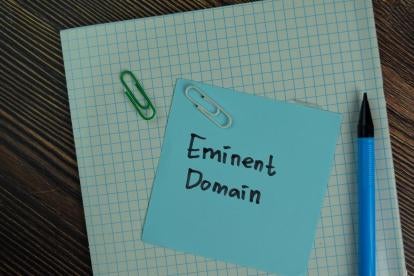This blog is the third in a municipal law series on all things roads. Property issues involving roads are fact specific and require an analysis of the facts and circumstances of your situation. This blog addresses the issue of the interplay between a statutory road or road by prescription vis a vis the statute of limitations for an eminent domain petition. If you have a specific question or legal issue, please contact the municipal law attorneys at SMGG.
When does the eminent domain statute of limitations begin on a road that becomes a public road by virtue of statute or prescription? If you read our first Road Blog on Public and Private Roads in Pennsylvania, you know that there are three distinct ways in which a road that has been laid out but not formally declared is deemed public: the introduction of court records showing the road to have been opened under eminent domain; by statute; or by prescription.
Regarding a statutory public road and a public road by prescription (requiring uniform, adverse, and continuous use for 21 years), there is a natural interplay with takings laws, which require that, in the absence of a declaration of taking, a petition for the appointment of viewers for the assessment of damages under [the Eminent Domain Code, 26 Pa. C.S. §§ 101-1106,] must be filed within six years from the date on which the asserted taking, injury or destruction of the property occurred or could reasonably have been discovered by the condemnee. 42 Pa. C.S. § 5527(a)(2).
Both statute and prescription methods require use by the public for a set number of years, along with maintenance by the municipality. By way of example, per Section 2307 of the Second Class Township Code:
(a) Every road which has been used for public travel and maintained and kept in repair by the township for a period of at least twenty-one years is a public road having a right of-way of thirty-three feet even though there is no public record of the laying out or dedication for public use of the road.
Thus, by statute, in a Second Class Township, a non-declared road can only become public where there is evidence that, for at least 21 years, it has been maintained by the municipality in which it is situated and has been used for travel by the general public. Therefore, in a road dispute, historical evidence of maintenance and public use is critical.
So, when does the statute of limitations for an eminent domain claim begin to run for a landowner who wants to challenge the nature of a road on or abutting his or her property? When the municipality first made efforts to maintain the road and the public used the road or after the period set forth by statute or prescription? In the unpublished Commonwealth Court opinion of Dysert et al. v. Robinson Township, No. 38 C.D. 2021 , the Court said that the statute of limitations began to run after the 21-year period of maintenance and use. In that case, the municipality demonstrated maintenance and use going back to 1974, therefore, the trial court held that the statute of limitations began to run in 1995 and that the landowners had six years from that date to file a petition under the laws of eminent domain. The Commonwealth Court agreed. An additional fact that the court considered was that the landowners were put on actual notice when they purchased the property in 1997 and 1998, because the deed language referencing the road as a “public road” was sufficient enough to put them on notice and preclude the tolling of the statute of limitations for filing their Petition.
Although the case is unreported and not precedential, it may be cited for persuasive value, and offers an opportunity to review of this underreported area of the law.




 i
i


